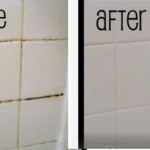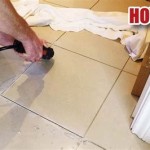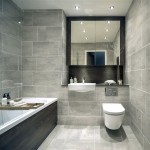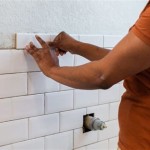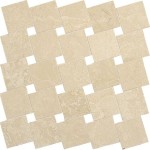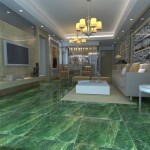What Type Of Board Do You Use In A Tile Shower?
Selecting the appropriate backer board for a tile shower is a crucial step in ensuring a long-lasting, watertight, and structurally sound installation. The substrate behind the tile plays a vital role in supporting the weight of the tile, resisting moisture penetration, and providing a stable surface for the mortar to bond to. Choosing the wrong type of board can lead to a multitude of problems, including cracked tiles, mold growth, and even structural failure of the shower enclosure.
Several types of backer boards are available, each with its own set of characteristics, advantages, and disadvantages. The selection process should be guided by factors such as the shower's design, the type of tile being used, the local building codes, and the installer's level of experience. This article will explore the most common types of backer boards used in tile showers, outlining their properties, applications, and key considerations for selection.
Cement Board
Cement board, also known as cement backer board (CBU), is a widely used and reliable option for tile shower installations. It is composed of cement reinforced with fiberglass mesh, creating a durable and water-resistant substrate. Cement board is available in various thicknesses, typically ranging from ¼ inch to ½ inch, and in sheet sizes such as 3x5 feet and 4x8 feet.
One of the primary advantages of cement board is its inherent resistance to water damage. It does not rot, warp, or disintegrate when exposed to moisture, making it an ideal choice for the wet environment of a shower. Its inorganic composition also prevents the growth of mold and mildew, contributing to a healthier bathroom environment. Furthermore, cement board provides an excellent bonding surface for tile mortar, ensuring a strong and long-lasting tile installation.
Cement board's high density and rigidity enable it to support heavy tile, such as large-format tiles or natural stone. It also provides a stable and impact-resistant surface, minimizing the risk of tile cracking due to substrate movement or accidental impacts.
Despite its many benefits, cement board also presents certain challenges. It is heavier and more difficult to cut than some other backer board options, requiring specialized tools such as a scoring knife or a circular saw with a diamond blade. Installing cement board can also be a dusty process, necessitating proper ventilation and respiratory protection. Additionally, while cement board is water-resistant, it is not entirely waterproof. Proper waterproofing measures, such as applying a liquid waterproofing membrane or using waterproof tape on the seams, are essential to prevent water penetration.
When installing cement board, it is crucial to follow the manufacturer's instructions carefully. The boards should be fastened to the studs with corrosion-resistant screws specifically designed for cement board. The screws should be spaced according to the manufacturer's recommendations, typically every 6-8 inches. Seams between the boards should be reinforced with fiberglass mesh tape and thin-set mortar to create a smooth and continuous surface.
Foam Backer Board
Foam backer board, also known as waterproof tile backer board, is a relatively new and increasingly popular alternative to cement board. It is typically made from extruded polystyrene (XPS) or expanded polystyrene (EPS) foam, coated with a cementitious layer or a fiberglass mesh reinforcement. Foam backer boards are lightweight, waterproof, and easy to install, making them an attractive option for many tile shower projects.
The primary advantage of foam backer board is its inherent waterproof nature. Unlike cement board, it does not absorb water, eliminating the need for additional waterproofing measures in many installations. This can save time, money, and effort, while also providing added peace of mind. The lightweight nature of foam backer board also makes it easier to handle and install, especially in tight spaces or when working alone.
Foam backer board is also relatively easy to cut and shape, using tools such as a utility knife or a hand saw. This allows for greater flexibility in design and installation, particularly when dealing with curved surfaces or unusual shower configurations. Furthermore, foam backer board provides excellent thermal insulation, which can help to reduce condensation and improve energy efficiency in the bathroom.
However, foam backer board also has some limitations. It is generally less rigid and less impact-resistant than cement board, making it potentially unsuitable for heavy tile or high-traffic areas. The cost of foam backer board is also typically higher than cement board, which may be a significant factor for budget-conscious projects. While foam backer board is waterproof, proper sealing of the seams and penetrations is still essential to prevent water from entering the wall cavity. This usually involves using a special sealant or tape specifically designed for foam backer board.
When installing foam backer board, it is important to follow the manufacturer's instructions carefully. The boards should be fastened to the studs with screws and washers specifically designed for foam backer board. The screws should be spaced according to the manufacturer's recommendations, typically every 6-8 inches. Seams between the boards should be sealed with a waterproof sealant or tape to create a watertight barrier.
Waterproof Coating Over Gypsum Board
While not strictly a backer board itself, gypsum board (also known as drywall) can be used as a substrate for tile in showers when combined with a suitable waterproof coating. This approach is often used in residential construction, particularly in areas where building codes permit it. It is important to note that standard gypsum board is not suitable for wet environments and will quickly deteriorate if exposed to moisture. For this method to be effective, a moisture-resistant or waterproof gypsum board must be used, and it must be protected with a high-quality waterproofing membrane.
The key to success when using gypsum board and a waterproof coating is the careful selection and application of the waterproofing membrane. This membrane must be able to completely seal the gypsum board from moisture penetration, even under prolonged exposure to water. Liquid-applied membranes, sheet membranes, and vapor-retarding primers are some examples of materials used for this purpose.
One advantage of using gypsum board is its relatively low cost and ease of installation. It is lightweight, easy to cut and shape, and readily available at most building supply stores. Gypsum board also provides a smooth and flat surface for the tile, making it easier to achieve a professional-looking finish. However, the success of this method hinges entirely on the integrity of the waterproofing membrane. Any cracks, punctures, or gaps in the membrane can allow water to penetrate the gypsum board, leading to mold growth, structural damage, and ultimately, tile failure.
Before applying the waterproofing membrane, the gypsum board must be properly prepared. This includes ensuring that the surface is clean, dry, and free of any loose debris. All seams and screw holes should be filled with joint compound and sanded smooth. The waterproofing membrane should be applied according to the manufacturer's instructions, paying particular attention to corners, edges, and penetrations. Multiple coats may be required to achieve the necessary thickness and coverage.
Considerations for Choosing a Backer Board
When selecting a backer board for a tile shower, several factors should be considered to ensure a successful installation. These factors include the type of tile being used, the size and configuration of the shower, the local building codes, and the installer's level of experience. The weight and size of the tile can significantly impact the choice of backer board. Heavy tile, such as large-format tiles or natural stone, requires a more rigid and durable substrate, such as cement board. Smaller, lighter tiles may be suitable for foam backer board or gypsum board with a waterproof coating.
The size and configuration of the shower can also influence the selection process. In small or unusually shaped showers, the ease of cutting and shaping the backer board may be a crucial factor. Foam backer board, which is relatively easy to cut with a utility knife, may be preferable in these situations. In larger showers, the cost of the backer board may be a more significant consideration, making cement board a more economical option. In addition, the local building codes should be consulted to ensure that the chosen backer board meets all applicable requirements.
Finally, the installer's level of experience should be taken into account. Some backer board options, such as cement board, require specialized tools and techniques to install properly. If the installer is not experienced with these materials, it may be best to choose a more user-friendly option, such as foam backer board or gypsum board with a waterproof coating. It is always recommended to consult with a qualified tile contractor or building inspector to determine the most appropriate backer board for a particular project.
In summary, the selection of the correct backer board for a tile shower is paramount for a successful and long-lasting installation. Cement board offers durability and resistance to moisture, while foam backer board provides ease of installation and inherent waterproofing. Gypsum board may be suitable when used with a proper waterproofing membrane. By carefully considering the factors outlined in this article, installers can make an informed decision that will ensure a beautiful and functional tile shower for years to come.

Cement Backer Board For Shower A Pro Busts All The Myths

Cement Backer Board For Shower A Pro Busts All The Myths

Cement Backer Board For Shower A Pro Busts All The Myths

Here S How Install A New Shower Stall With Tile Floor

Cement Backer Board For Shower A Pro Busts All The Myths

Shower Waterproofing Crash Course Diytileguy
Drywall And Cement Board For The Downstairs Bathroom Blog Homeandawaywithlisa

What Is The Best Backer Board For A Shower

Proper Way To Set Wallboard For Shower

Shower Waterproofing Crash Course Diytileguy
Related Posts


